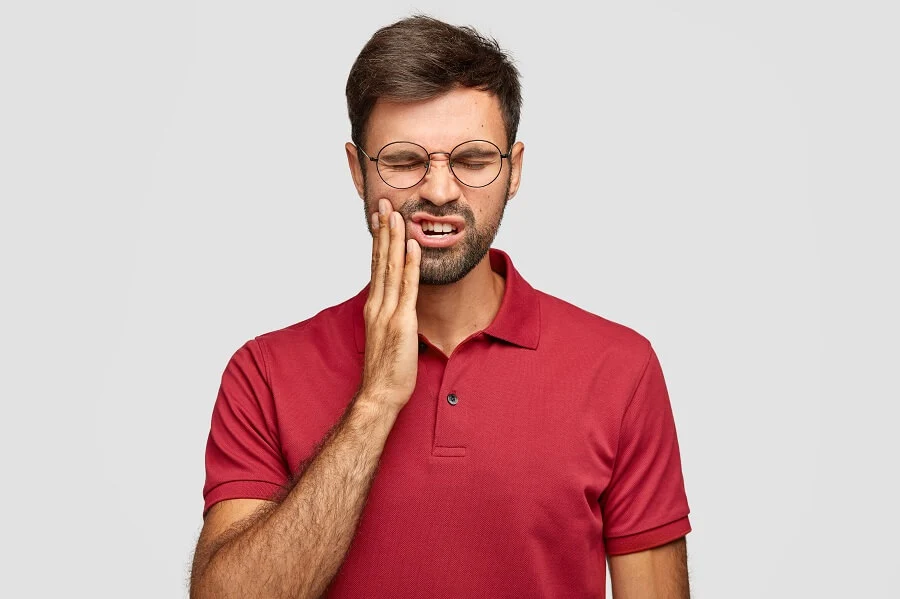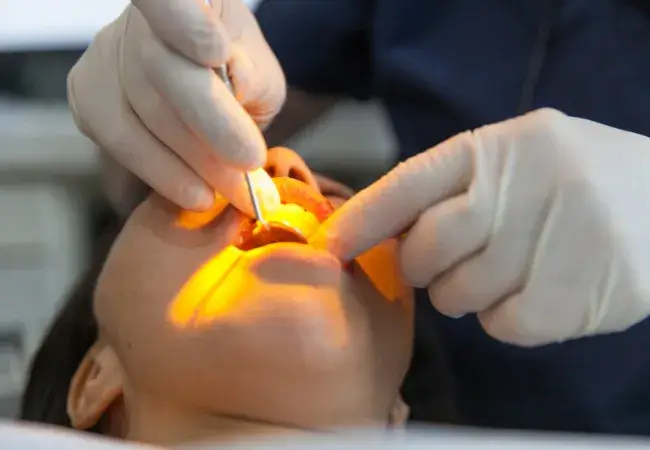Retention or prophylactic removal of asymptomatic impacted wisdom teeth.
Wisdom teeth, also known as third molars, often become impacted, meaning they fail to emerge fully or at all from the gums due to limited space in the jaw. This dental condition raises the question: Should asymptomatic impacted wisdom teeth be retained or removed prophylactically? In this blog post, we will explore the considerations and factors involved in making this decision, aiming to provide you with a comprehensive guide to determine the best course of action for your oral health.
Wisdom teeth (third molars) are the last teeth that generally erupt at the end of the mouth between the ages of 17 and 26 years. They have a major diversity in their development and eruption pattern due to the limited jaw space which leads to failure in eruption (fully impacted) or partial eruption.
An impacted wisdom tooth is called ‘asymptomatic’ and ‘disease‐free’ if there are no signs or symptoms of disease affecting the wisdom tooth or nearby structures. However, if symptoms like swelling and ulceration of gums around the impacted wisdom tooth occur or damage to the adjacent teeth and structures then extraction is indicated.
It is generally agreed that removing wisdom teeth is appropriate if signs or symptoms of disease related to the wisdom teeth are present, but there is less agreement about how asymptomatic disease‐free impacted wisdom teeth should be managed.
I. Understanding Impacted Wisdom Teeth:
• Definition of impacted wisdom teeth: Impacted wisdom teeth are third molars that do not fully emerge or grow in a normal position due to lack of space in the jaw.
• Types of impactions: Impacted wisdom teeth can be categorized as mesial (angled toward the front), distal (angled toward the back), vertical (upright), or horizontal (lying on their side).
• Potential complications associated with impacted wisdom teeth: Impacted wisdom teeth can lead to problems like pain, infections, gum disease, cysts, tumors, or damage to adjacent teeth.
II. The Significance of Asymptomatic Wisdom Teeth:
• Defining asymptomatic impacted wisdom teeth: Asymptomatic impacted wisdom teeth are those that do not cause any pain, discomfort, or noticeable symptoms.
• Absence of pain or discomfort: Is it an indication of no problems?: Although asymptomatic, impacted wisdom teeth can still pose risks and complications, even in the absence of pain.
III. Indications for Prophylactic Removal:
• The importance of proactive dental care: Prophylactic removal involves the proactive extraction of asymptomatic impacted wisdom teeth to prevent future complications.
• Preventive approach to avoid future complications: Removing impacted wisdom teeth before they cause issues can help avoid potential risks, such as infections, cysts, tumors, or misalignment of other teeth.
• Orthodontic considerations and potential teeth misalignment: Wisdom teeth can exert pressure on adjacent teeth, potentially causing misalignment and orthodontic problems.
• Increased risk of infections, cysts, or tumors: Retaining impacted wisdom teeth can increase the chances of developing infections, cysts, tumors, or other oral health issues.
• Effectiveness of early removal in reducing future complications: Removing impacted wisdom teeth early in life can reduce the likelihood of complications and promote oral health.
IV. Factors Influencing the Decision:
• Individual anatomy and jaw structure: The shape and size of the jaw, as well as the position of the impacted teeth, can influence the decision.
• Age and developmental stage: The age of the individual and the stage of dental development can affect the decision-making process.
• Oral hygiene practices and susceptibility to dental issues: Personal oral hygiene habits and the individual’s overall susceptibility to dental problems are important factors to consider.
• Expert opinion and professional recommendations: Consulting with a dental professional who can assess the specific case and provide expert advice is crucial in making an informed decision.
V. Consultation with a Dental Professional:
• The role of a dentist or oral surgeon: Dentists and oral surgeons are qualified professionals who can evaluate the condition of impacted wisdom teeth and provide guidance.
• Evaluation and assessment of impacted wisdom teeth: Through examinations, X-rays, and other diagnostic tools, the dental professional can assess the position, condition, and potential risks of impacted wisdom teeth.
• X-rays, imaging, and diagnostic tools to aid decision-making: Dental imaging techniques are used to visualize impacted wisdom teeth and their impact on the surrounding structures.
• Open communication with the dental professional and addressing concerns: Clear communication with the dental professional allows for the sharing of concerns, questions, and information necessary for making an informed decision.

VI. Potential Risks and Complications:
• Delayed complications and associated pain: Even if asymptomatic at present, impacted wisdom teeth can cause complications and pain later in life.
• Risk of infection and gum disease: Impacted wisdom teeth can create spaces where bacteria can accumulate, leading to infection and gum disease.
• Development of cysts or tumors: Cysts or tumors may develop around impacted wisdom teeth, requiring surgical intervention.
• Damage to neighboring teeth or adjacent structures: Impacted wisdom teeth can cause damage to adjacent teeth, roots, or even the jawbone itself.
VII. Post-Extraction Recovery and Care:
• What to expect after wisdom tooth extraction: Information on the typical post-operative experience, such as swelling, discomfort, and healing time.
• Post-operative instructions and pain management: Guidelines provided by the dental professional to manage pain, swelling, and promote proper healing.
• Proper oral hygiene during the healing process: Instructions on maintaining oral hygiene after extraction, including gentle brushing, avoiding certain foods, and rinsing techniques.
VIII. Case Studies and Patient Experiences:
• Real-life stories illustrating different outcomes and decisions: Examples of individuals who have chosen to retain or remove their impacted wisdom teeth, providing insights into their experiences.
• Lessons learned from individuals who retained or removed asymptomatic impacted wisdom teeth: Sharing the experiences and lessons gained from those who have made decisions regarding impacted wisdom teeth.
Conclusion:
Making a decision about the retention or prophylactic removal of asymptomatic impacted wisdom teeth is a complex process that requires careful consideration. By understanding the potential risks, benefits, and individual factors involved, you can make an informed decision in collaboration with a dental professional. Remember, regular dental check-ups and open communication with your dentist are key to maintaining optimal oral health. Consult with a qualified dental professional to discuss your specific situation and receive personalized recommendations.
Our Expert Doctor

Dr. Deena Jamal Harazeen
Experience : 8+ Years
Primary Speciality : General Dentist
Dr. Deena Jamal Harazeen is a highly skilled general dentist at American Medical Centre with 8+ years of experience in General and cosmetic dentistry.
She completed her Bachelors in Dentistry with Honours List and then persuade Diploma in oral Implantology and clinical training, Diploma in Porcelain-veneer course, ADAMS Certification & Clear Smile Certification. Her experience in field of Aesthetic and Cosmetic Dentistry had made her a renowned name in the field of cosmetic dentistry. She is an expert in root canal therapy, retreatment endodontics, painless dentistry, teeth bleaching, and Veneers.


